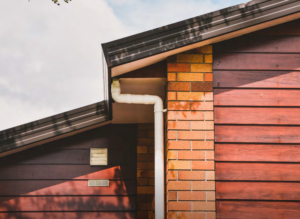What will be your path to prosperity?
Investing in property is something that most of us think about doing, want to do or hope to do. However approximately 20% of Australians only ever actually do it.
Why is this still the case when we know:
- our superannuation payout is only likely to pay out our mortgage on retirement,
- our savings won’t be enough to live on in retirement, we will have to severely reduce our lifestyle AND more than likely require some form of government assistance,
- we need to get ahead financially now, not later, and
- property prices won’t be any cheaper in 10 years time?
Is it because:
- we don’t know how to take the first step,
- we are too scared to make a decision in case we get it wrong,
- we don’t think we can afford it (although we’ve never investigated it with our mortgage broker to see if we can),
- our friends and family tell us it’s a bad idea (and they would know because…?),
- I’m only renting, so how on earth can I afford an investment property,
or is it that
- we are STILL waiting for the right time?
Whatever the reason may be, there is more than one way to get started on the investment property ladder. Let’s have a look at a few options.
1. The good old…save a deposit
The most simple and straightforward method of making a property purchase is to save a deposit. Prior to the GFC it was possible to borrow 100% of the property value (and you could even add the borrowing costs on top of that as well). Then for a few years lenders got quite tough on lending criteria and were requiring at least 10-15% of the property value (subject to lender’s mortgage insurance – LMI) combined with tougher servicing requirements.
More recently we have seen the lending institutions gain more confidence by reducing their somewhat strict criteria. We are again able to obtain finance with a 5% deposit, while still adding the LMI premium by using LMI capitalisation up to 97%.
With a typical home loan you are usually only required to pay LMI if you are borrowing more than 80% of the property value.
When investing, the general rule is to borrow as much as you can. Let’s assume you are approved to purchase an investment property with a 5% deposit.
This means that a property worth $500,000 will require a deposit of $25,000 plus on costs (usually estimated at 5%). That’s still a lot of money to save, given that average rent for a 2 bedroom home across Australian capital cities is $363.50/week1 and the ABS reported the average earnings were $1,033.30/week in November 2011.
Looking at these average figures you can easily determine that it will take quite a while for most people to save the minimum deposit.
So what can you do?
Ask your parents to help
You may have a parent who is willing to give you a lump sum gift to help you on your way.
Call us for our article on “How my parents can help me buy my first investment property”.
Use your rent as a savings plan Most lenders now acknowledge the money that you are currently paying in rent could be used to show your ability to save and capacity to service a loan. This is referred to as non-genuine savings.
Criteria varies across different lenders, so we can help assess your individual circumstances. In general having a continuous rental history of 12 months (regardless of the amount of rent paid) will help show a proven saving record.
If you have a 3 month rental history, you can also include second tier deposit sources to make up the required 5% deposit amount.
Second tier sources are:
- commission payments,
- dividends,
- inheritance,
- non-real estate asset sales, and
- tax refunds.
Borrow with family and friends It is becoming more popular to share the costs and investment with other owners and up to 30% of co-owners are now investors.
Call us for our article on co-ownership.
2. Use the equity in your home/other property
If you are already repaying your own home or have an investment property, you may have enough equity to access a deposit for your next property purchase by tapping in to this equity.
I’ve heard that before but how does it work?
The ultimate goal for the typical Australian is to own their own home. So when someone suggests to them “Why not use the equity in your home to purchase your investment property?”, alarm bells ring in most people’s heads.
We tell ourselves:
- But we’ve worked so hard to pay off our home loan. Why would we jeopardise that?
- I’m too scared. I don’t want to lose my home.
- What happens if one of us loses our job?
- I’ve heard that tenants wreck your property.
- Etc etc etc.]
The reality is that sometimes it is actually safer to purchase an investment property as most of the expenses are covered by the tenant and the tax man. With good insurance (landlord, mortgage and some risk insurance) most people are usually safe.
Of course you need to purchase using essential investing criteria to ensure your investment is going to be a good one. We can help you with that.
So how does using the equity work? The basic principle is that if you have enough equity to draw from your existing home for a deposit and purchase costs, then you can redraw that amount from your home and use it as your deposit for the investment property.
Your lender is going to require that the total loan amount (balance of your existing home loan and investment redraw amount) is less than 80% of the value of your home otherwise lender’s mortgage insurance (LMI) is required.
Provided that you, the tenant and the tax man can service all debt, you will be on your way to building your investment property portfolio. You can continue to use this basic principle every time you build enough equity in the combined value of your properties.
Call us for our article on “Using the equity in my home to purchase an investment property”.


































